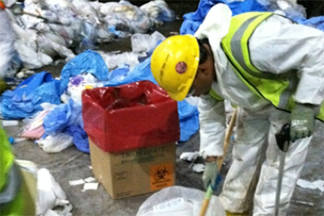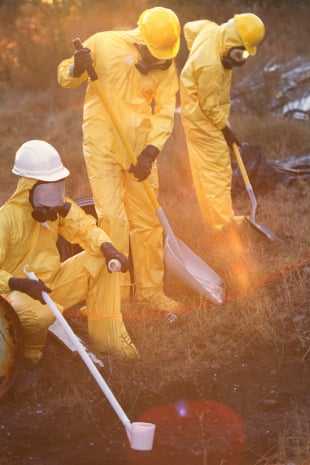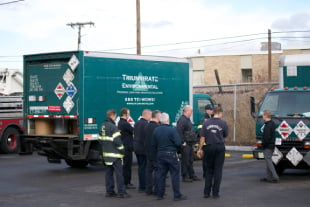5 Things You’re Forgetting for Emergency Response Preparedness
Facility spills by nature are unforeseen, but there are steps you can start taking today to ensure that the personnel in your buildings are prepared to immediately respond in the event of the unexpected. Reviewing your response plan, training those involved, and communicating with a response provider in advance are all essential pieces to preparedness.
Follow these five steps to avoid anxiety in the event of an emergency by preparing for a spill in advance.
1. Implement your contingency plan.
Does your company have a plan as mandated by state and/or federal regulations? Reviewing some questions with your team will help you close any gaps in your facility’s response strategy. Updating your plan, maintaining your equipment, and training your team are all key.
2. Qualify, quantify, contain.
When a spill occurs, the person on site must be qualified to determine the exact source of the spill, to approximate when it first broke loose and what approximate amount has leaked, to recognize any hazards, and to begin to contain the spill.
3. Report.
You need to be aware of the federal, state, and local requirements for reporting an oil spill. You should also check in with your local fire and/or emergency planning department.
4. Develop a post-emergency remedial plan.
Once the initial spill is contained, do you have a plan of action for next steps? You should. Your ER provider should ask some questions (in advance of any spill) to help you gauge where there may be gaps or gray areas in your long-term response strategy.
5. Prepare your team with a tabletop exercise.
Sit down with your team. Determine everyone who could be involved with a potential spill, gather them together in the same room, and have a preparatory conversation. This is another proactive way to make sure that your entire team is on the same page with response actions in a hypothetical scenario.
It’s time to pull your spill contingency plan off the shelf. Dust it off, and review it. Download our guide for in-depth step-by-step plan for preparing for an emergency spill event. It will help you recognize what to look out for when you review your plan, analyze it, determine gaps, and call upon your team to strengthen it. Taking proactive measures today will prepare you for a spill tomorrow, keep you in compliance, and could save you thousands of dollars in containment and remediation costs down the line.
Want to learn more about improving your emergency spill response program?






